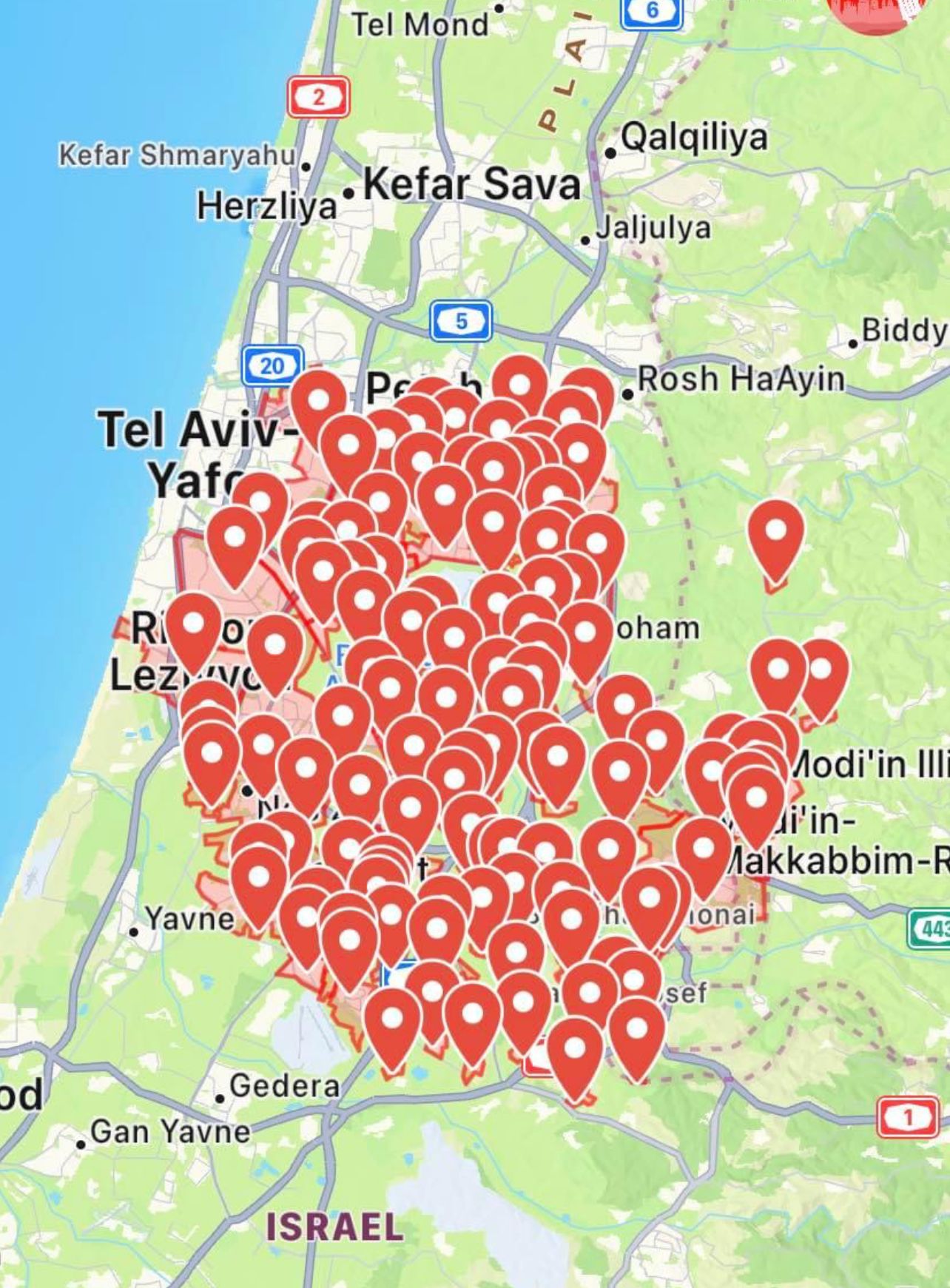Firefighters and civilians at the site of a wildfire following a ballistic missile attack from Yemen, near Moshav Kfar Daniel, September 15, 2024. (Photo: Yossi Aloni/Flash90)
Siren alerts were sounded across many communities in the Shfela and Gush Dan regions of central Israel on Sunday morning. Shortly afterward, the IDF confirmed that a surface-to-surface missile, launched by Houthi rebels in Yemen, had triggered the alarms. The missile landed approximately six kilometers (3.75 miles) from Ben-Gurion International Airport.
A preliminary Israeli Air Force (IAF) investigation indicated that the missile exploded in mid-air after being intercepted by air defense systems and did not reach its intended target. Photos on social media showed damage in several areas caused by falling debris from the missile and the interceptor.
At the time of publication, the IDF assessment stated that the Houthi missile broke apart in the air. The Arrow missile defense system likely intercepted one of the missile’s fragments, followed by additional Iron Dome interceptors launched to target larger fragments. The rest of the fragments landed in open areas, one fell at the train station in Modi’in.

Police near the remains of a ballistic missile fired from Yemen, near Moshav Kfar Daniel, September 15, 2024. (Photo: Yossi Aloni/Flash90)
The IAF is continuing its investigation of the Houthi missile infiltration. Initial reports indicate it was a surface-to-surface (ballistic) missile that flew for about 10 minutes from launch until reaching Israeli airspace. The ballistic missile exited the atmosphere before re-entering. Israel’s N12 News reported that the missile was discovered by air defense systems during flight and that several Arrow missiles were launched from Israel to intercept it.
According to the Walla news site, the Houthi projectile was an Iranian Shahab-3 ballistic missile. The Walla report claims that the U.S. ballistic missile launch detection system did not warn Israel of the launch and that Israeli missile defense radar systems did not detect the missile until it was close to Israeli airspace.

Screenshot of Red Alert app showing sirens that went off because of the ballistic missile launched from Yemen
The IDF is examining whether any of the interceptors struck the Houthi missile. At present, the IDF believes the fragments found near Ben-Gurion Airport were from the interceptors.
Magen David Adom emergency services reported that nine people were injured while running to a protected space. A fire broke out in the community of Kfar Daniel in Ramle due to falling interceptor fragments. Fire crews were working to control the flames that ignited in an open area.
After consulting with IDF Home Front Command, the Ministry of Education decided that all educational activities would continue as usual.
About one-half hour after the Houthi missile, air raid sirens sounded in the northern Galilee and Golan Heights due to an infiltration by a hostile aircraft. The alarm was caused by an explosive drone crossing from Lebanon into the area of Metula. There were no reported damage or casualties.
Around 8:20 a.m., air raid sirens again sounded in northern communities. The IDF later announced that about 40 projectile launches were detected from southern Lebanon, activating sirens in the Upper Galilee area and the northern Golan Heights. Some of the launches were intercepted, while the rest fell in open areas. There were no reported casualties.
Firefighters were working to extinguish fires that broke out due to impacts in open areas.
According to N12, Golan Regional Council head Uri Kellner said, “This is what life in the north looks like every day. Not once every few months.”
“The siren this morning in the center of the country is a small example of what the lives of thousands in the north look like every day, even today,” he added.
“The State of Israel needs political and operational courage, deterrence must be restored, and the arms of the Iranian octopus must be cut off,” Kellner continued. “Our children need to wake up calmly and not to an alarm, not in the center, not in the south and not in the north.”
Several hours after the incident, Houthi military spokesman, Yahya Sare’e, took responsibility for the launch, claiming it used a “hypersonic ballistic missile” and that Israeli air defenses were unable to stop it.
“The operation was carried out with a hypersonic ballistic missile, which managed to reach its target, while enemy defenses failed to intercept and confront it, it traveled a distance of 2,040 kilometers in 11 and a half minutes, and caused a state of fear and panic among the residents of Israel, with more than two million Israelis running for shelters for the first time in the history of the Israeli enemy.”
Sare’e appeared to claim that the missile was developed by the Houthis; however, most military analysts doubt this claim due to the terror group’s lack of resources to research or manufacture their own weapons.
Sare’e also threatened additional strikes, stating: “The enemy must expect more strikes and quality operations to come as we stand on the threshold of the first anniversary of the blessed operation on October 7.”
































